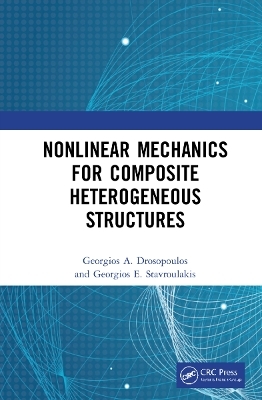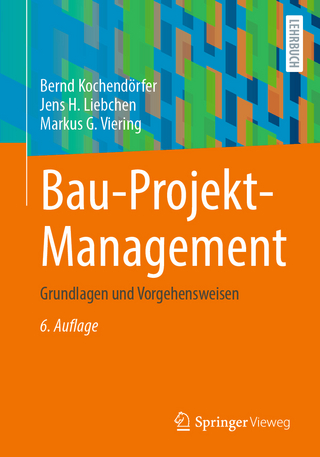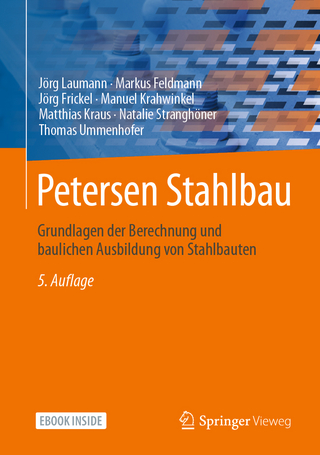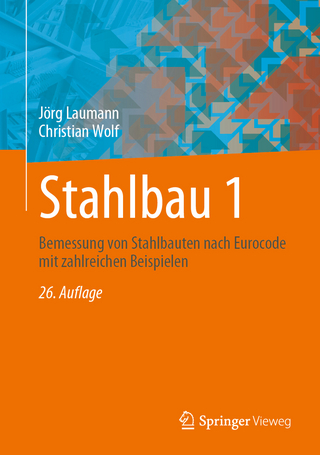
Nonlinear Mechanics for Composite Heterogeneous Structures
Seiten
2022
CRC Press (Verlag)
978-0-367-86155-1 (ISBN)
CRC Press (Verlag)
978-0-367-86155-1 (ISBN)
This book applies both classical and multi-scale finite element analysis to the non-linear, failure response of composite structures. It uses continuum mechanics for investigating failure at the macroscopic structural scale, and advanced discrete methods for simulating constituent materials and their nonlinear behaviour.
Nonlinear Mechanics for Composite Heterogeneous Structures applies both classical and multi-scale finite element analysis to the non-linear, failure response of composite structures. These traditional and modern computational approaches are holistically presented, providing insight into a range of non-linear structural analysis problems. The classical methods include geometric and material non-linearity, plasticity, damage and contact mechanics. The cutting-edge formulations include cohesive zone models, the Extended Finite Element Method (XFEM), multi-scale computational homogenization, localization of damage, neural networks and data-driven techniques. This presentation is simple but efficient, enabling the reader to understand, select and apply appropriate methods through programming code or commercial finite element software.
The book is suitable for undergraduate studies as a final year textbook and for MSc and PhD studies in structural, mechanical, aerospace engineering and material science, among others. Professionals in these fields will also be strongly benefited.
An accompanying website provides MATLAB codes for two-dimensional finite element problems with contact, multi-scale (FE2) and non-linear XFEM analysis, data-driven and machine learning simulations.
Nonlinear Mechanics for Composite Heterogeneous Structures applies both classical and multi-scale finite element analysis to the non-linear, failure response of composite structures. These traditional and modern computational approaches are holistically presented, providing insight into a range of non-linear structural analysis problems. The classical methods include geometric and material non-linearity, plasticity, damage and contact mechanics. The cutting-edge formulations include cohesive zone models, the Extended Finite Element Method (XFEM), multi-scale computational homogenization, localization of damage, neural networks and data-driven techniques. This presentation is simple but efficient, enabling the reader to understand, select and apply appropriate methods through programming code or commercial finite element software.
The book is suitable for undergraduate studies as a final year textbook and for MSc and PhD studies in structural, mechanical, aerospace engineering and material science, among others. Professionals in these fields will also be strongly benefited.
An accompanying website provides MATLAB codes for two-dimensional finite element problems with contact, multi-scale (FE2) and non-linear XFEM analysis, data-driven and machine learning simulations.
Georgios A. Drosopoulos is a Lecturer in Civil Engineering at the University of Central Lancashire, UK, and Honorary Associate Professor at University of KwaZulu-Natal, South Africa. Georgios E. Stavroulakis is Professor at the Technical University of Crete, Greece, Privatdozent at the TU Braunschweig, Germany, and Honorary Professor at the JUST, Jordan.
1. Introduction. 2. Linear and Non-linear Finite Element Analysis. 3. Failure of Heterogeneous Materials Using Non-linear Continuum Laws. 4. Contact Mechanics. 5. The Extended Finite Element Method. 6. Homogenization. 7. Multi-scale Analysis for Composite Materials. 8. Data-driven Analysis. Appendix A. Matlab Codes on Numerical Modelling of Composite Heterogeneous Structures.
| Erscheinungsdatum | 09.03.2022 |
|---|---|
| Zusatzinfo | 2 Tables, black and white; 60 Line drawings, black and white; 12 Halftones, black and white; 72 Illustrations, black and white |
| Verlagsort | London |
| Sprache | englisch |
| Maße | 156 x 234 mm |
| Gewicht | 580 g |
| Themenwelt | Technik ► Bauwesen |
| Technik ► Maschinenbau | |
| Technik ► Umwelttechnik / Biotechnologie | |
| ISBN-10 | 0-367-86155-0 / 0367861550 |
| ISBN-13 | 978-0-367-86155-1 / 9780367861551 |
| Zustand | Neuware |
| Informationen gemäß Produktsicherheitsverordnung (GPSR) | |
| Haben Sie eine Frage zum Produkt? |
Mehr entdecken
aus dem Bereich
aus dem Bereich
Grundlagen und Vorgehensweisen
Buch | Softcover (2021)
Springer Fachmedien Wiesbaden GmbH (Verlag)
37,99 €
Grundlagen der Berechnung und baulichen Ausbildung von Stahlbauten
Buch (2022)
Springer Vieweg (Verlag)
159,98 €
Bemessung von Stahlbauten nach Eurocode mit zahlreichen Beispielen
Buch | Hardcover (2024)
Springer Vieweg (Verlag)
59,99 €


